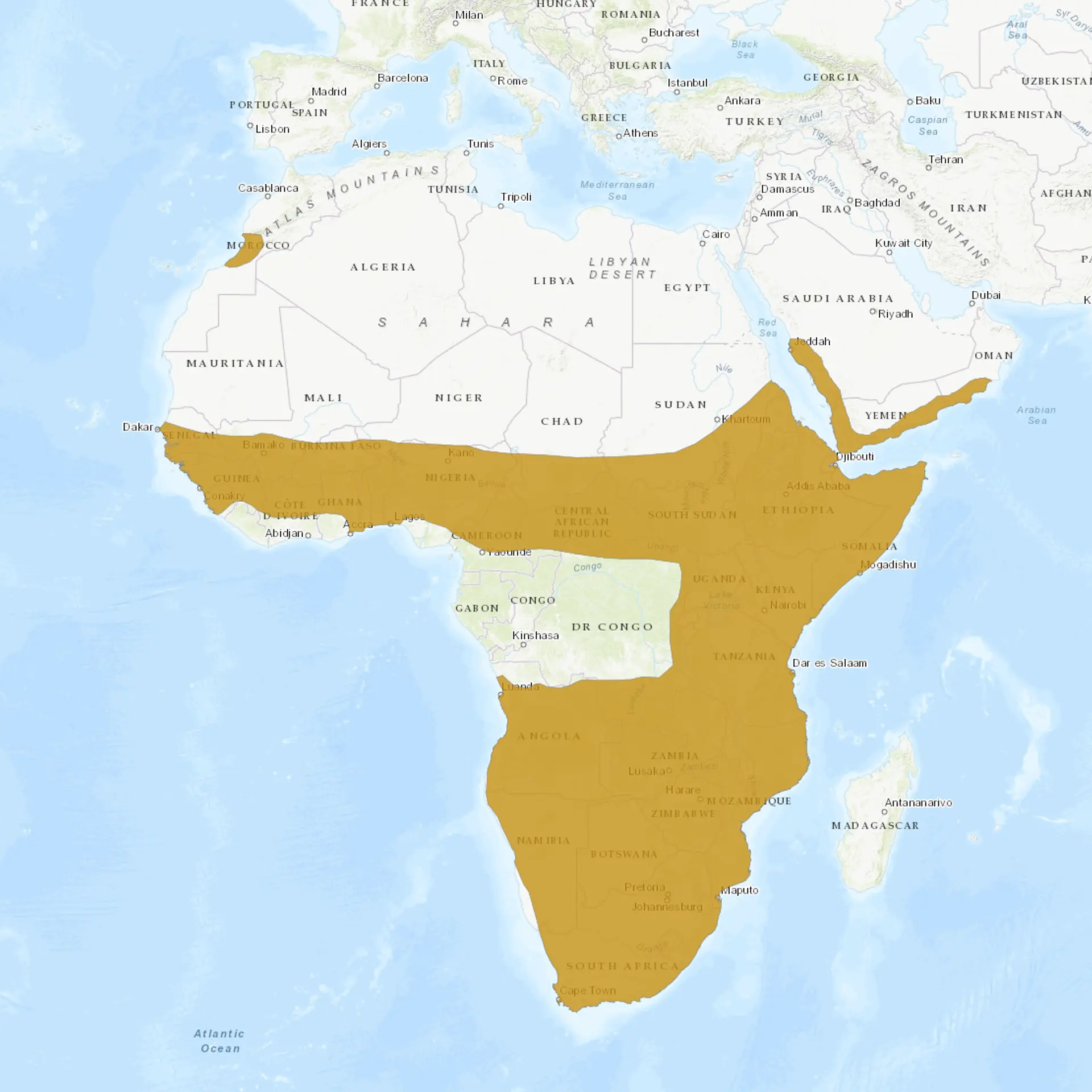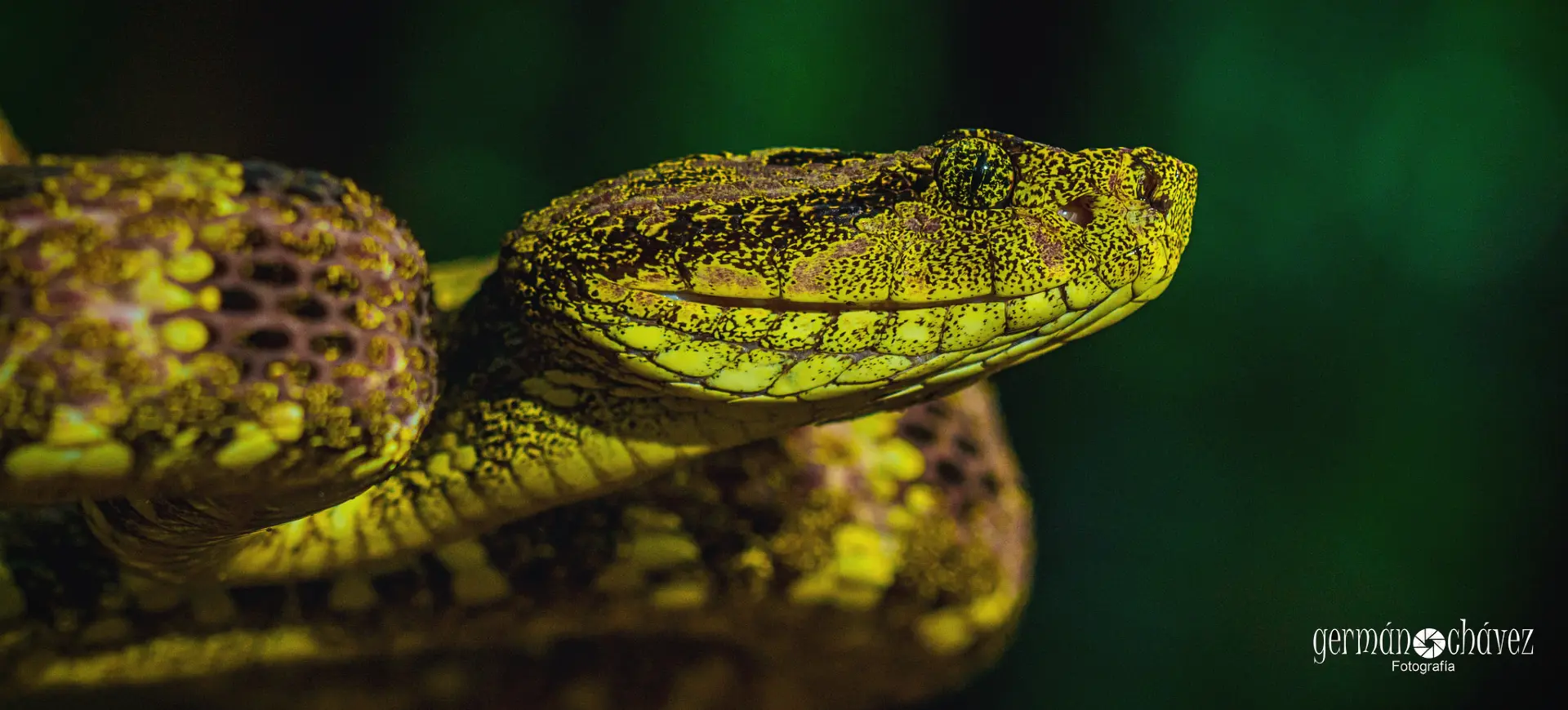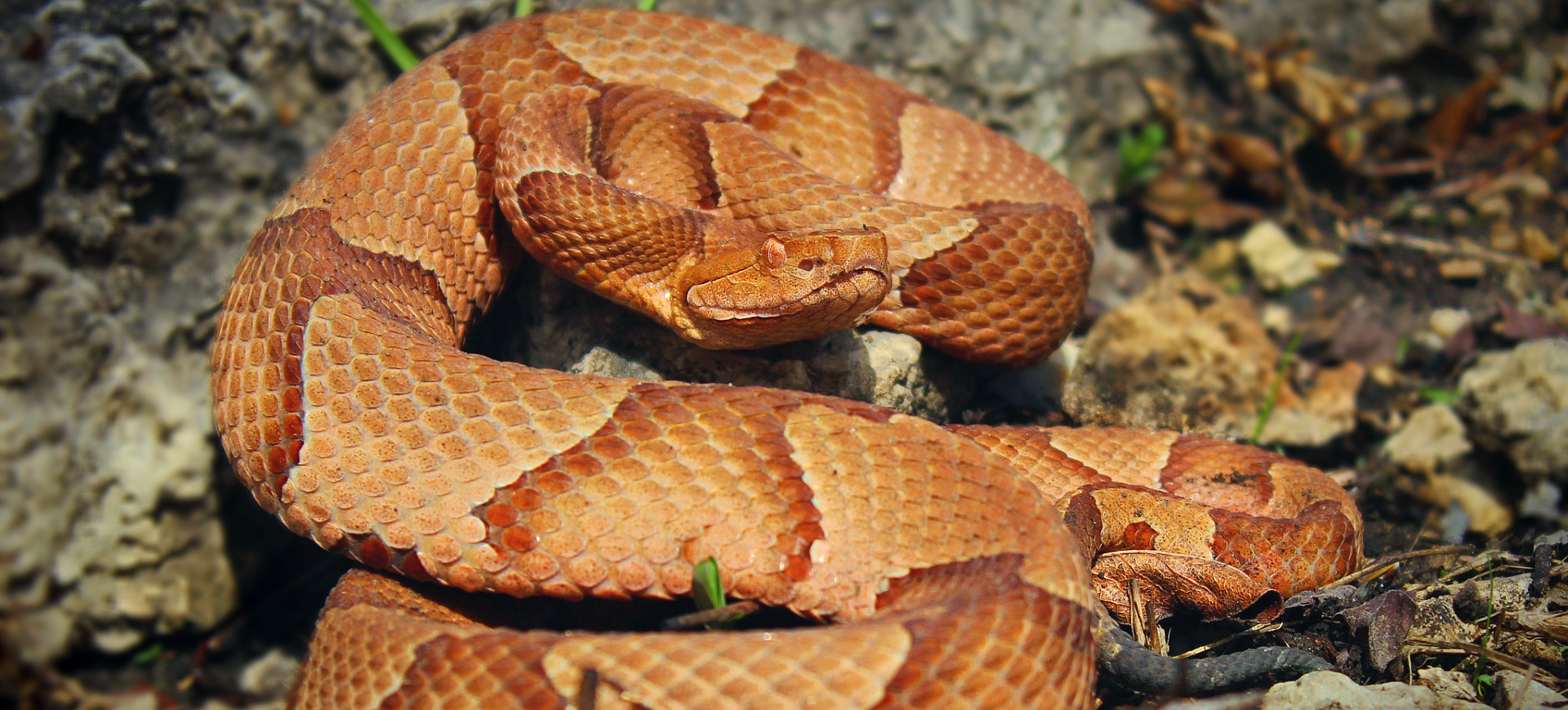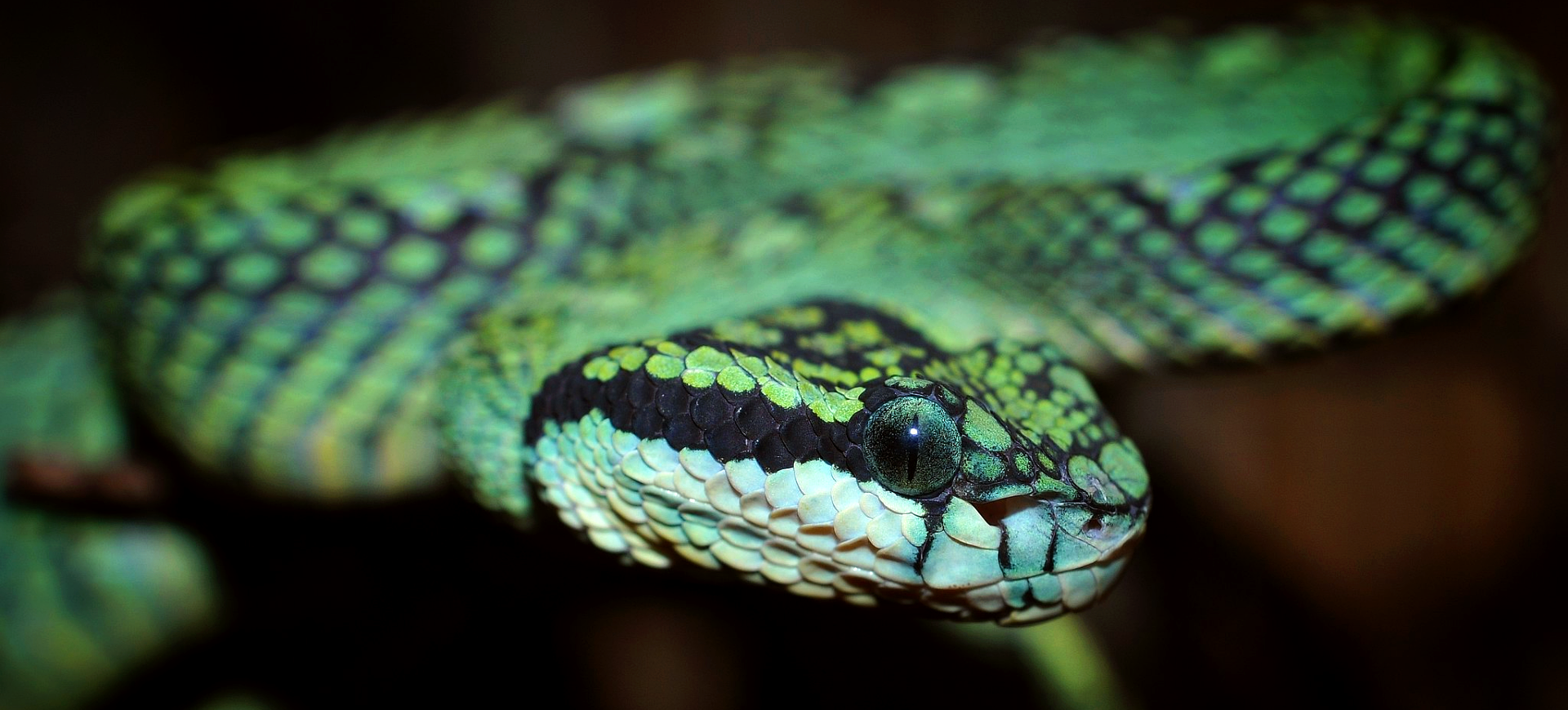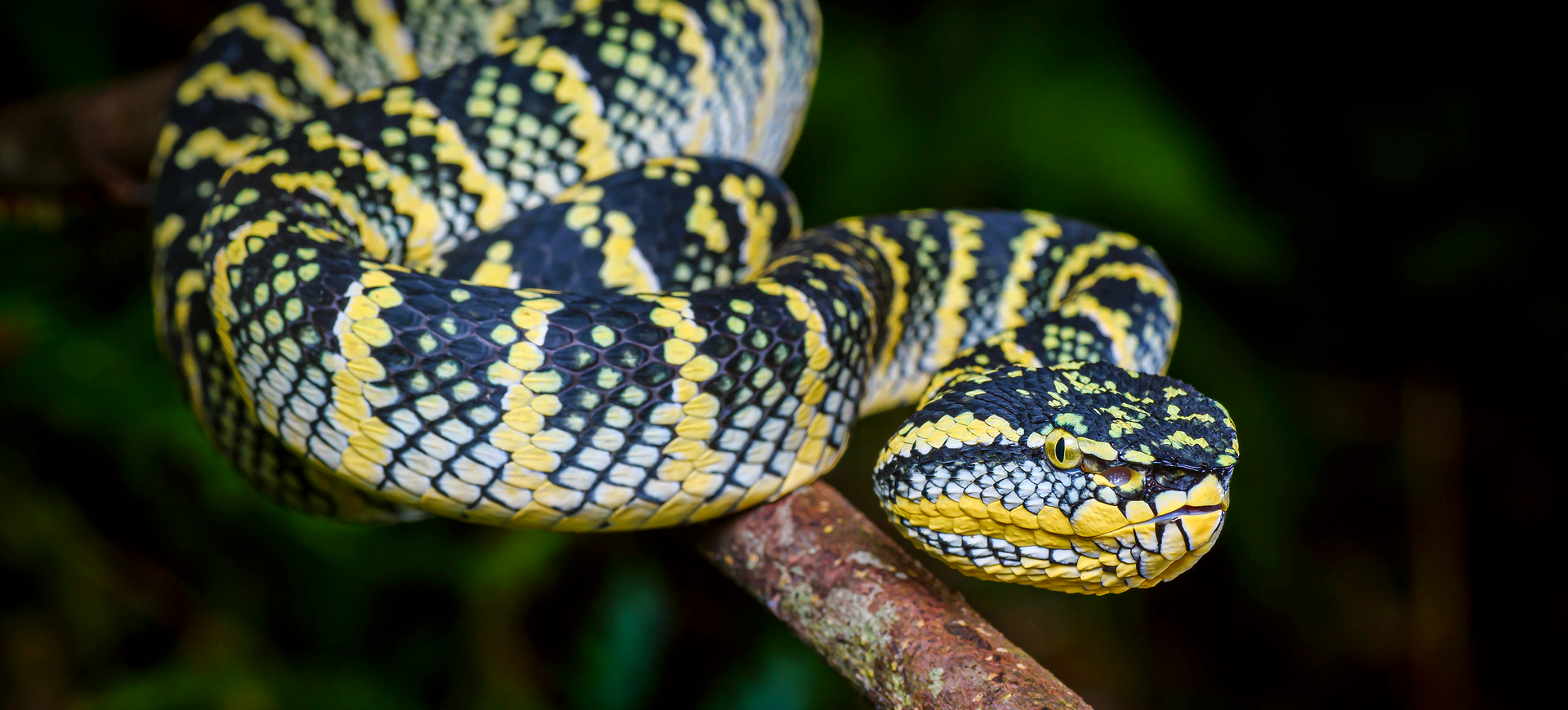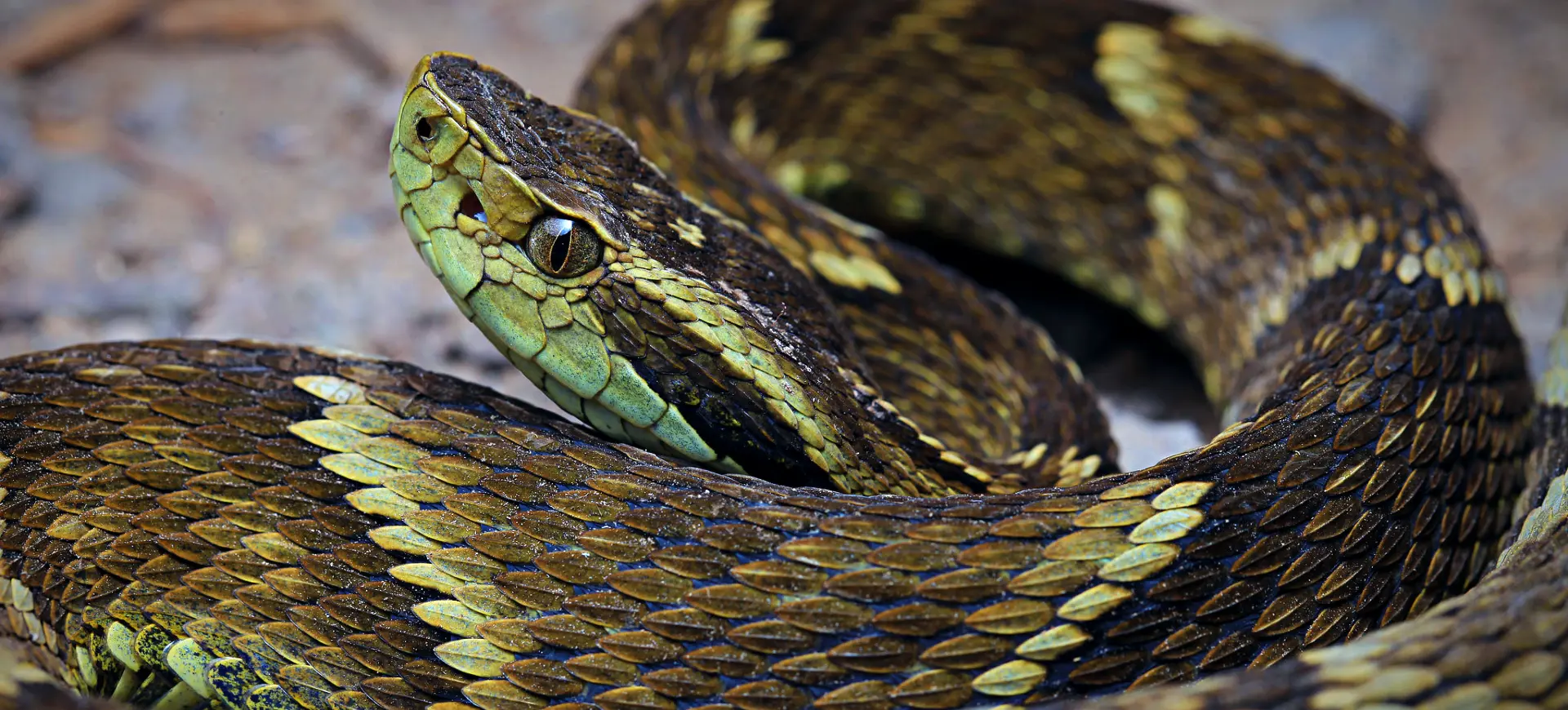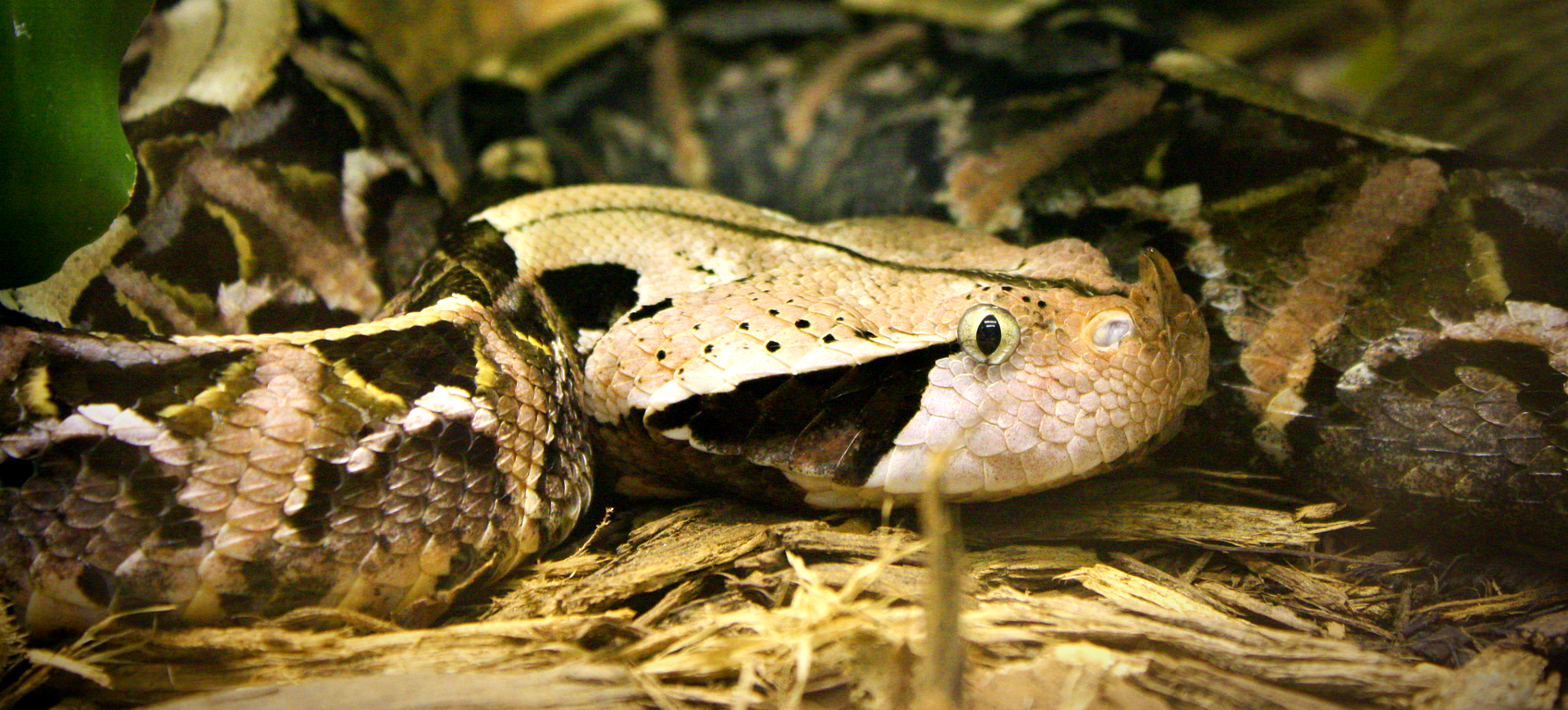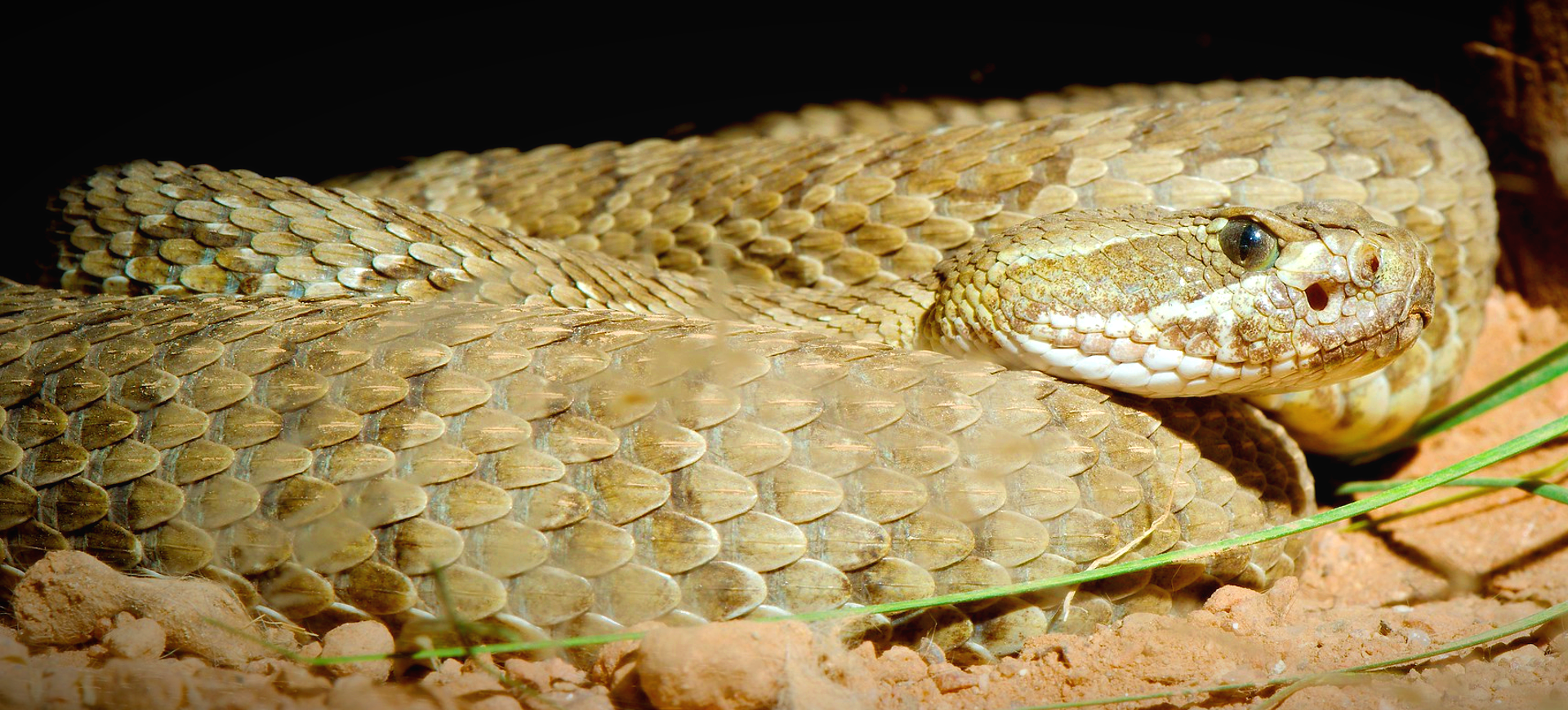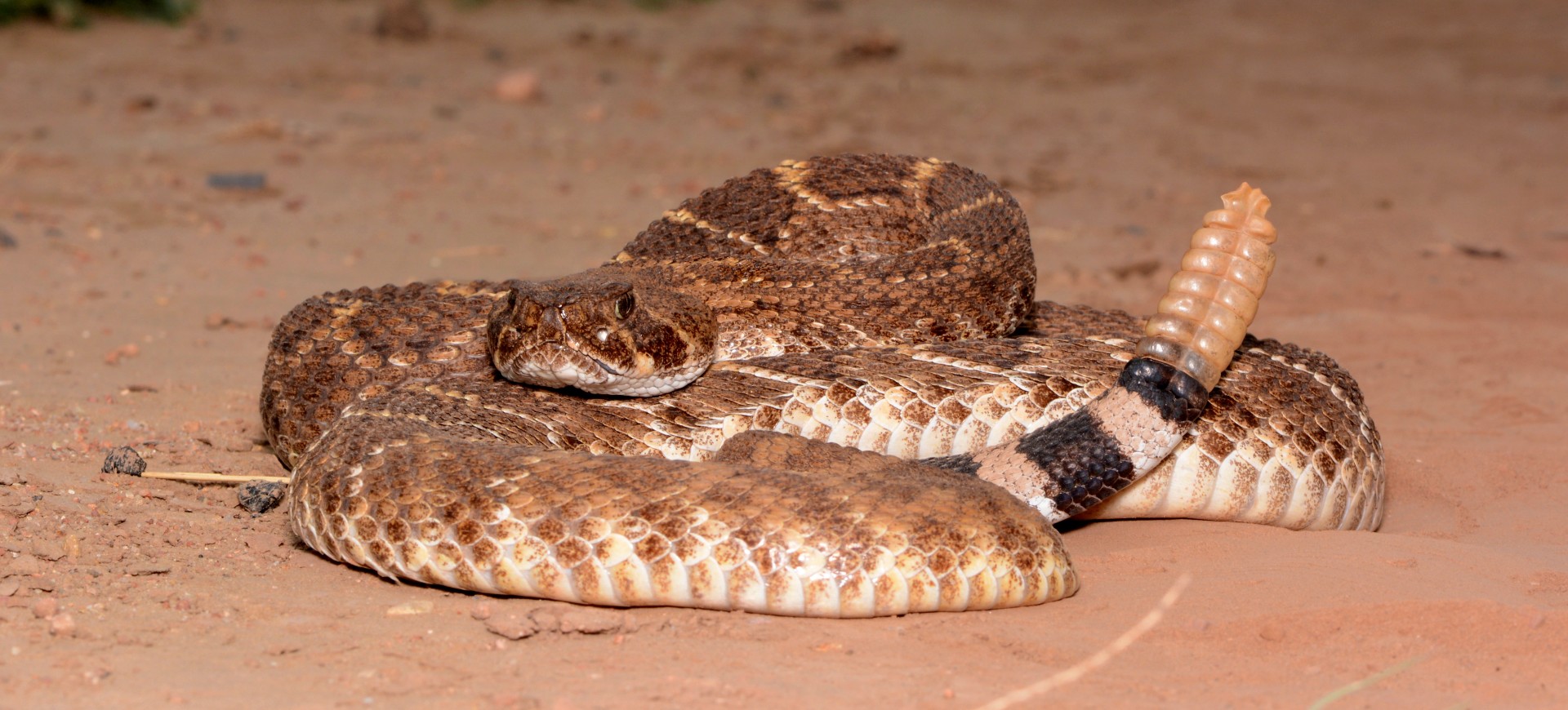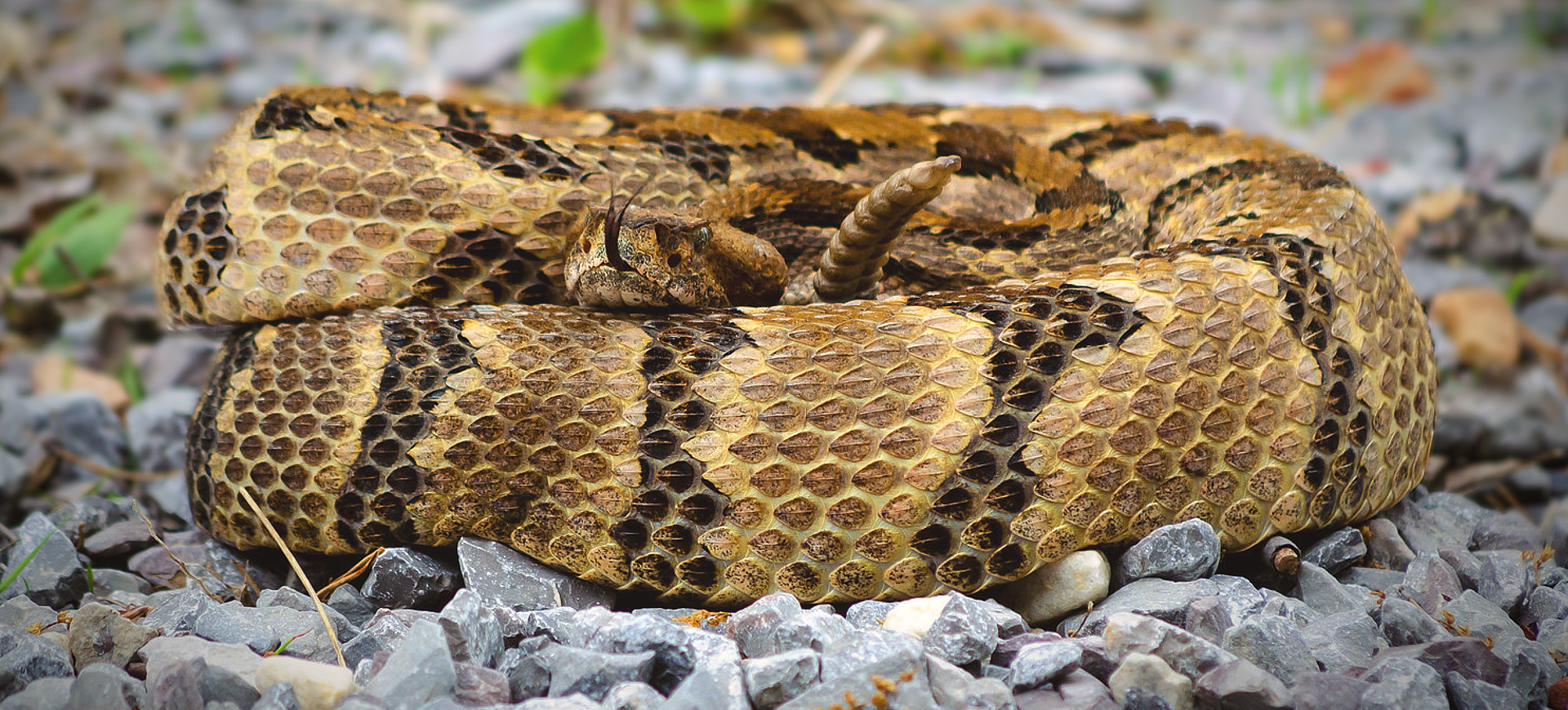Overview
The puff adder is a venomous snake in sub-Saharan Africa and the Arabian Peninsula. Known for its stout body and potent venom, it is one of the most dangerous snakes in Africa. Puff adders have a distinctive warning behavior where they inflate their bodies and produce a loud hissing sound when threatened. They are primarily ambush predators, relying on their camouflage to surprise prey.
Puff adders are highly adaptable and inhabit various environments, from savannas and grasslands to forests and semi-deserts. They are generally nocturnal, hunting at night and remaining hidden during the day. This snake’s diet consists mainly of small mammals, birds, amphibians, and occasionally other reptiles. The puff adder’s venom is highly toxic and capable of causing severe tissue damage and systemic effects in humans.
Breeding occurs seasonally, with females giving birth to live young after a gestation period of about seven months. Unlike many other snakes, puff adders do not lay eggs; instead, they give birth to 20-50 live young at a time. The newborns are independent immediately and receive no parental care. Puff adders have a relatively slow metabolism and can survive long periods without food.
Taxonomy
Kingdom
Phylum
Class
Order
Family
Genus
Species
Sub Species
Type
Current distribution:
Puff adders are widely distributed across sub-Saharan Africa and parts of the Arabian Peninsula. Their range extends from Senegal and Mauritania in the west to Ethiopia and Somalia in the east and South Africa. They are also found in parts of North Africa, including Egypt and Libya. This extensive distribution reflects their adaptability to various environmental conditions.
Despite their wide range, puff adder populations can be locally impacted by habitat destruction, such as deforestation and urbanization. However, they are generally resilient and can often be found in agricultural and suburban areas where they can still find sufficient cover and prey. Their presence in a wide range of protected areas and national parks helps ensure their continued survival. Conservation efforts focus on habitat protection and reducing human-wildlife conflict.
Physical Description:
Puff adders have a robust, thick body with a broad, triangular head. Their coloration is highly variable but typically includes a pattern of chevron-like bands in shades of brown, yellow, gray, or black. This cryptic coloration helps them blend into their surroundings, providing excellent camouflage. They have keeled scales and a rough texture to their skin.
Adult puff adders can grow to a length of 3.3 to 5.9 feet (1 to 1.8 meters), with females generally larger than males. Depending on their size and condition, they can weigh between 6.6 and 13.2 pounds (3 to 6 kg). Their stout build and powerful muscles make them slow movers, but they can strike rapidly when threatened or hunting. The eyes of the puff adder are small with vertical pupils, adapted for their nocturnal lifestyle.

Lifespan: Wild: ~10 Years || Captivity: ~20 Years

Weight: Male & Female: 6.6-13.2 lbs (3-6 kg)

Length: Male: 39-59 in (100-150 cm) || Female: 48-72 in (120-180 cm)

Top Speed: 1.6 mph (2.5 km/h)
Characteristic:
Native Habitat:
Puff adders are highly adaptable and can be found in various habitats, including savannas, grasslands, forests, and semi-deserts. They prefer areas with dense ground cover, such as tall grasses, shrubs, and leaf litter, which provide excellent camouflage and hunting opportunities. They are also commonly found near water sources, such as rivers and lakes, which attract prey animals. Despite their preference for more vegetated areas, puff adders can survive in arid regions with sparse vegetation.
During the day, puff adders seek shelter under rocks, logs, or caves to avoid the heat and potential predators. They are primarily nocturnal, becoming active at dusk and hunting throughout the night. This nocturnal behavior helps them avoid the hottest parts of the day and reduces the risk of encountering larger predators. Puff adders are solitary creatures, only coming together during the breeding season.
Biomes:
Biogeographical Realms:
Countries:
Diet:
Diet & Feeding Habits:
Puff adders are carnivorous and feed on small mammals, such as rodents, which form the bulk of their diet. They also consume birds, amphibians, and occasionally other reptiles. Puff adders are ambush predators, relying on their excellent camouflage to remain hidden until prey comes within striking distance. They use a quick, nasty bite to subdue their prey, which they then swallow whole.
Their venom contains a complex mix of toxins that cause rapid immobilization, internal bleeding, and tissue damage. Once the prey is captured, the puff adder uses its powerful jaws and flexible skull to ingest it whole, starting with the head. The digestion process is slow, and the snake can go between meals for weeks or months. Puff adders have a relatively low metabolic rate, which allows them to survive extended periods without food.
Mating Behavior:
Mating Description:
Puff adders have a polygynous mating system, where males compete to access females. The breeding season typically occurs during the warmer months, from spring to early summer. Males engage in combat by intertwining their bodies and pushing against each other to establish dominance and win the right to mate with a female. After mating, females give birth to live young rather than laying eggs, a process known as ovoviviparity.
Gestation lasts about seven months, and females can give birth to between 20 and 50 live young. The newborns are fully independent and receive no parental care. They are born with venom glands and are capable of hunting small prey almost immediately. The survival rate of the young is low due to predation and environmental challenges.
Reproduction Season:
Birth Type:
Pregnancy Duration:
Female Name:
Male Name:
Baby Name:
Social Structure Description:
Puff adders are solitary animals that come together only during the breeding season. They do not form social groups or exhibit social behaviors beyond mating interactions. Each individual maintains its territory, which it defends against intruders. Communication between puff adders is limited to visual and chemical signals used during courtship and mating.
Aggressive encounters between males during the breeding season are common, with physical combat often determining dominance and access to females. Puff adders are generally reclusive outside of the breeding season and avoid interactions with other snakes. Their solitary nature reduces competition for resources and helps them remain hidden from predators.
Groups:
Conservation Status:
Population Trend:
The population of puff adders is currently stable across much of their range. They are one of Africa’s most common and widespread snakes, and their adaptability to different habitats has contributed to their success. Despite their resilience, local populations can be impacted by habitat destruction, road mortality, and persecution by humans who fear their venomous bite. Conservation efforts are important to mitigate these threats and maintain healthy populations.
Puff adder populations thrive in protected areas, such as national parks and wildlife reserves. However, in regions experiencing significant habitat degradation or high levels of human activity, their numbers may be declining. Monitoring and research are needed to better understand puff adder population dynamics and inform conservation strategies. Public education and awareness campaigns can help reduce negative interactions between humans and puff adders.
Population Threats:
Habitat destruction, including deforestation and agricultural expansion, poses a significant threat to puff adder populations. Road mortality is another major issue, as vehicles often kill these snakes while crossing roads. Human persecution, driven by fear of their venomous bite, also leads to significant mortality. Climate change and environmental pollution can also impact their habitats and prey availability.
In some areas, puff adders are also collected for the pet trade and their skins, which are used in traditional medicine and fashion. These pressures can lead to localized declines, especially in regions where their habitat is already fragmented. Conservation measures must address these threats through habitat protection, legal protection, and public education. Collaborative efforts between governments, NGOs, and local communities are essential for effective conservation.
Conservation Efforts:
Conservation efforts for puff adders focus on habitat protection and reducing human-wildlife conflict. Establishing protected areas and national parks helps safeguard critical habitats and reduce habitat fragmentation. Legal protection against hunting and trade in some countries helps to reduce direct persecution. Research and monitoring programs are essential for understanding their ecology, behavior, and population trends.
Public education and awareness campaigns aim to reduce puff adders’ fear and persecution by highlighting their ecological importance and promoting coexistence. Community-based conservation initiatives engage local people in protecting and managing snake habitats. Collaboration with local communities is crucial for the success of conservation efforts. Continued funding and support for conservation programs are necessary to ensure the long-term survival of puff adders.
Additional Resources:
Fun Facts
- Puff adders are responsible for more snakebite fatalities in Africa than any other snake species due to their widespread distribution and potent venom.
- Their name comes from their defensive behavior of inflating their bodies and hissing loudly when threatened.
- Puff adders have a highly effective camouflage that allows them to blend into their surroundings and ambush prey.
- They can remain motionless long, waiting for prey to come within striking distance.
- Puff adders have heat-sensitive pits on their heads that help them detect warm-blooded prey.
- Despite their slow movement, puff adders can strike incredibly quickly and accurately.
- Their venom contains both cytotoxins and hemotoxins, causing severe tissue damage and internal bleeding.
- Puff adders give birth to live young, unlike many other snakes that lay eggs.
- They have a relatively low metabolic rate, allowing them to survive long periods without food.
- Puff adders play an important role in controlling rodent populations in their habitats.


